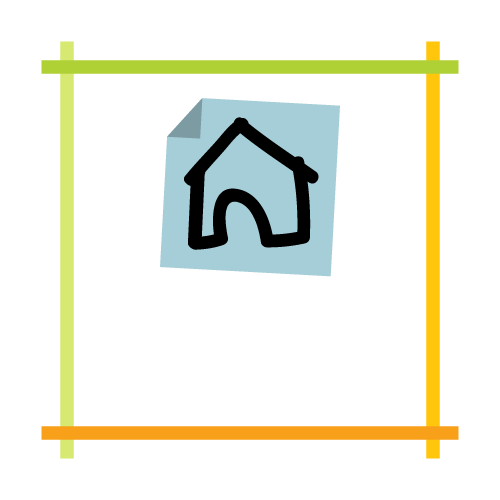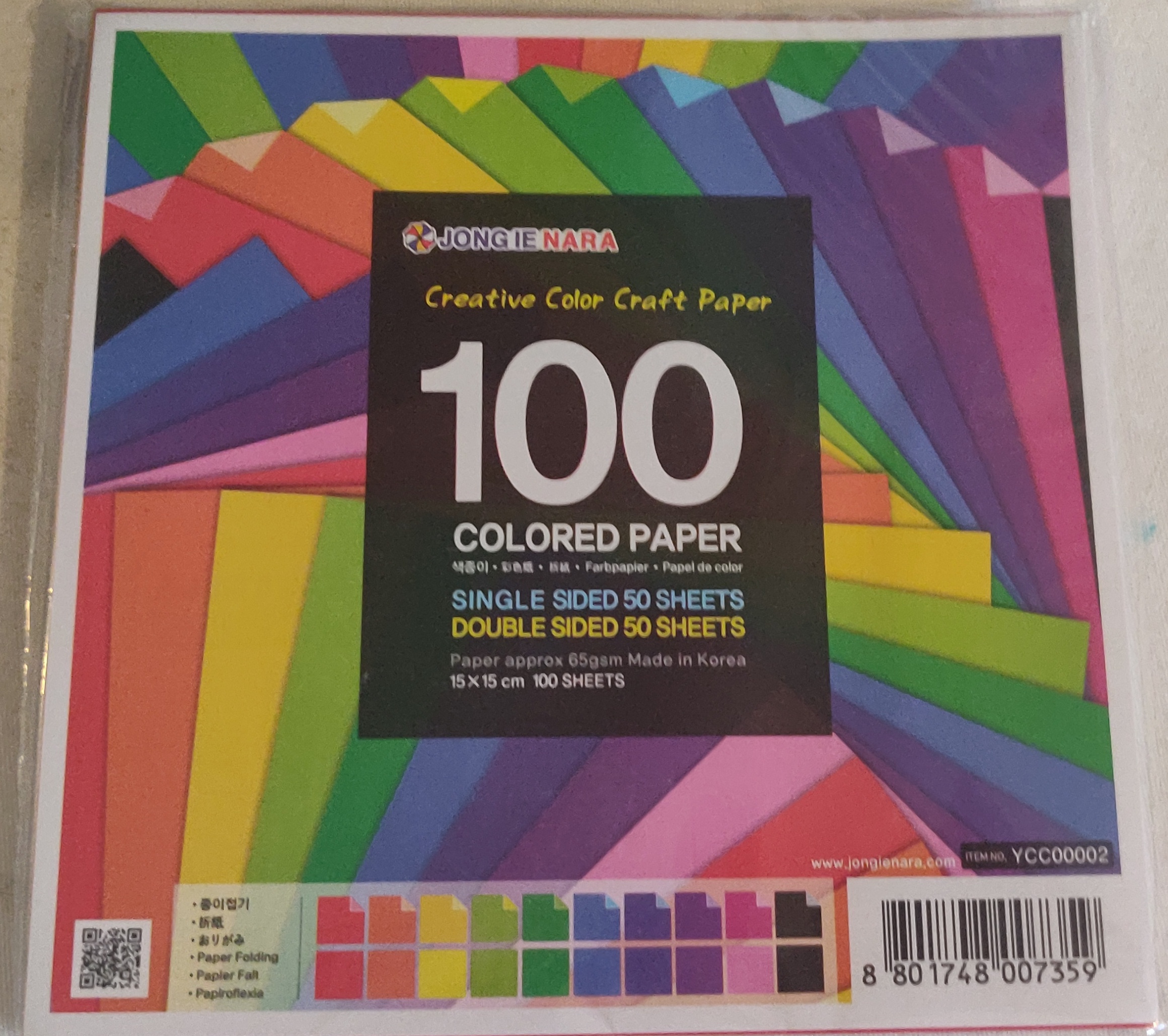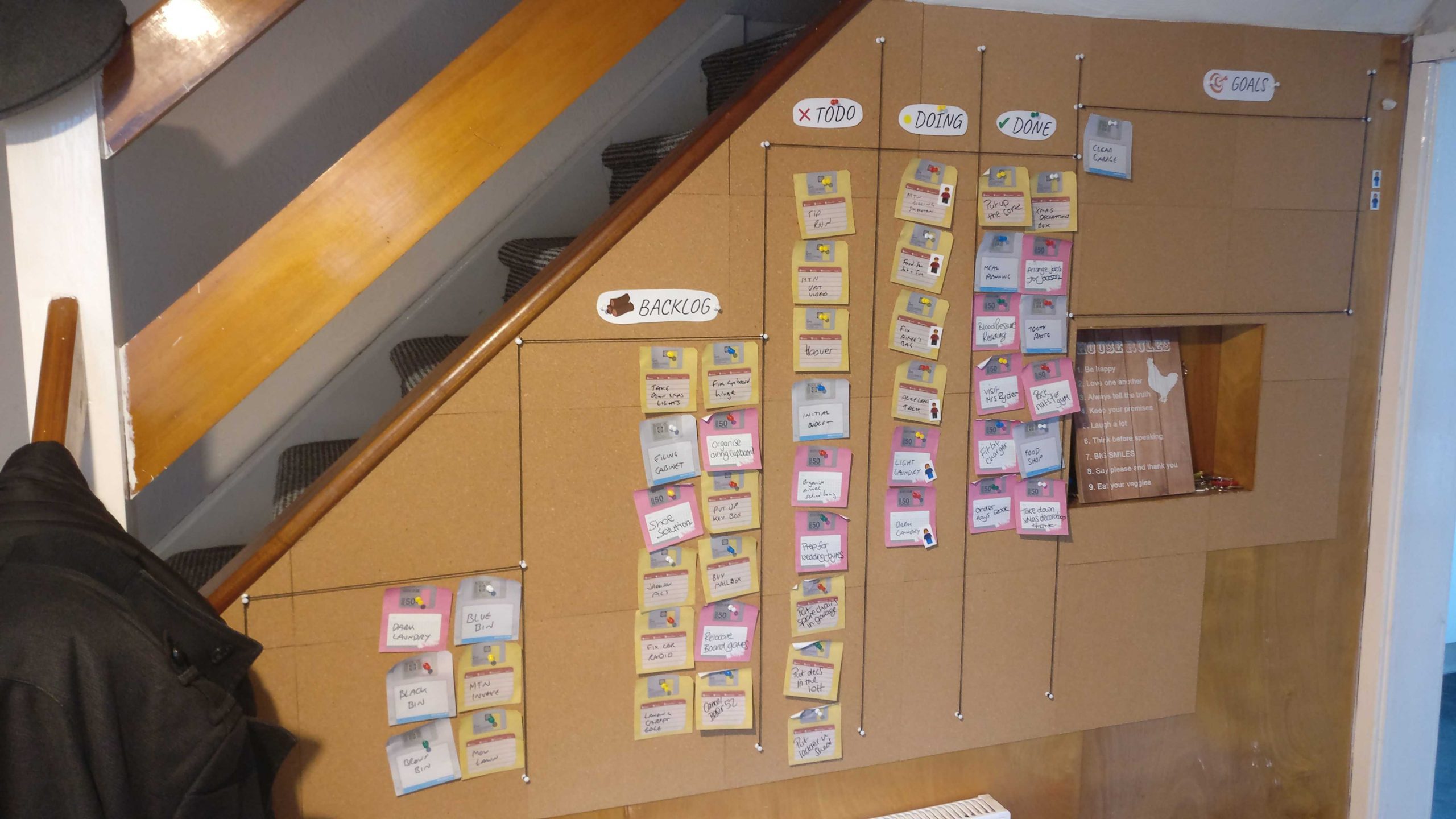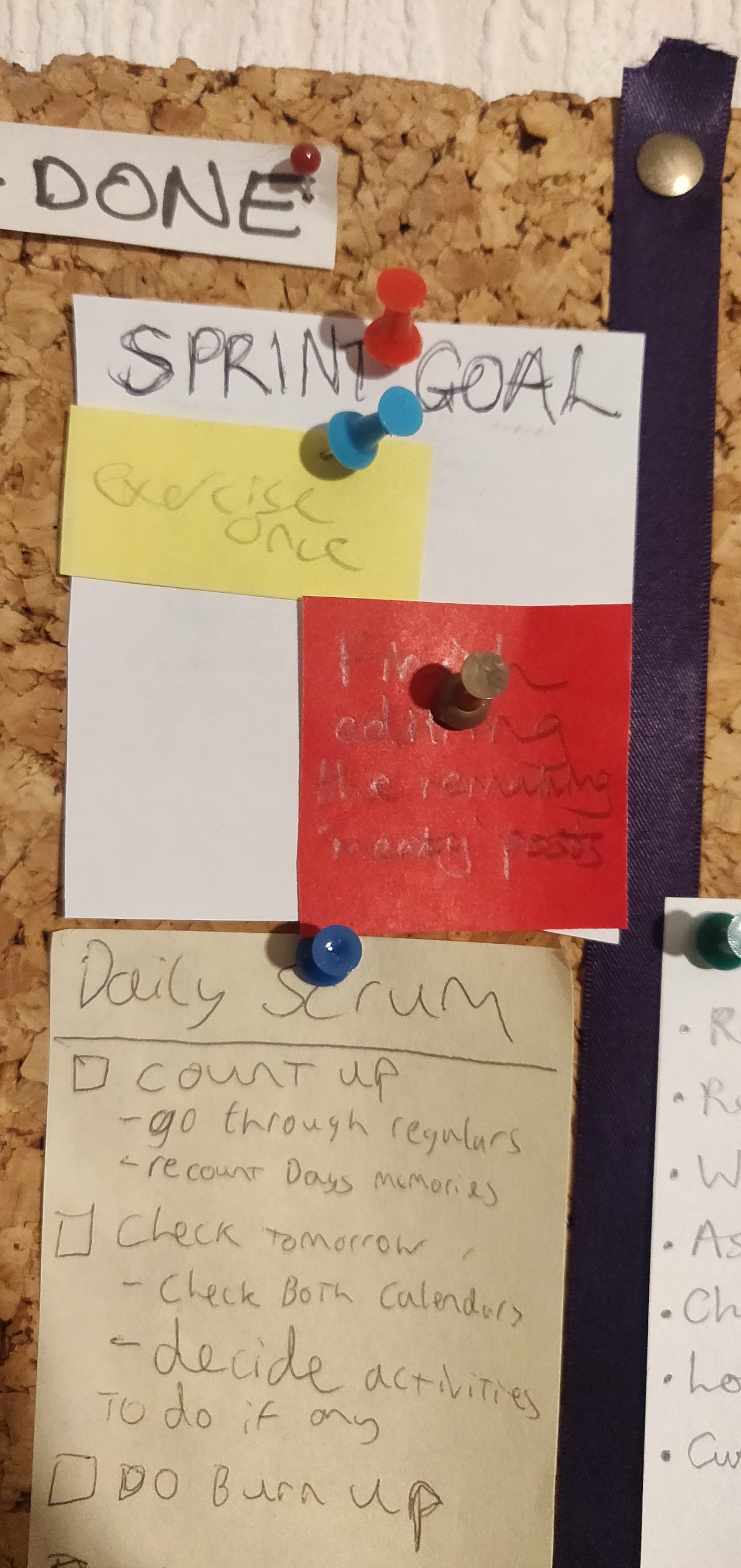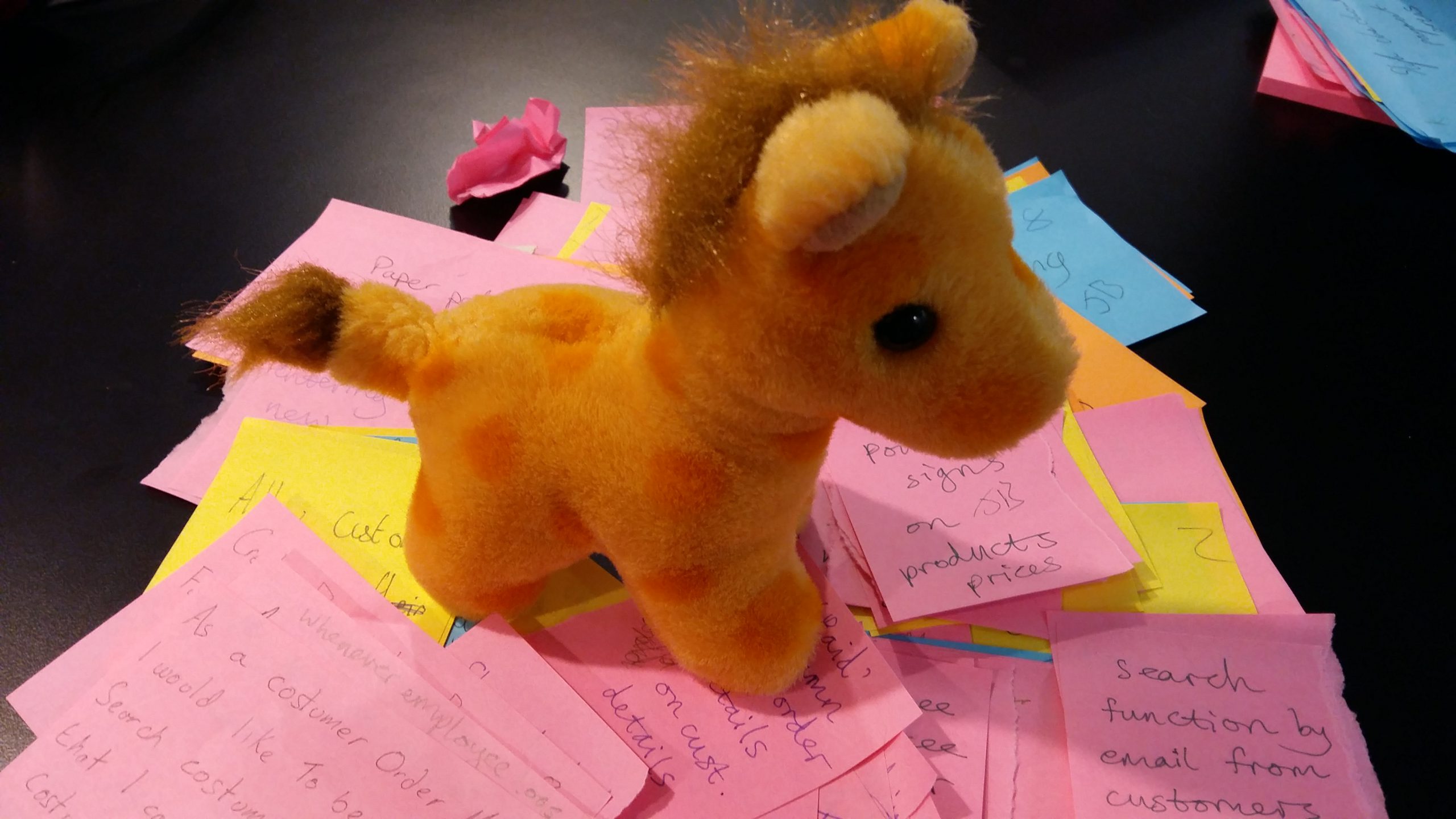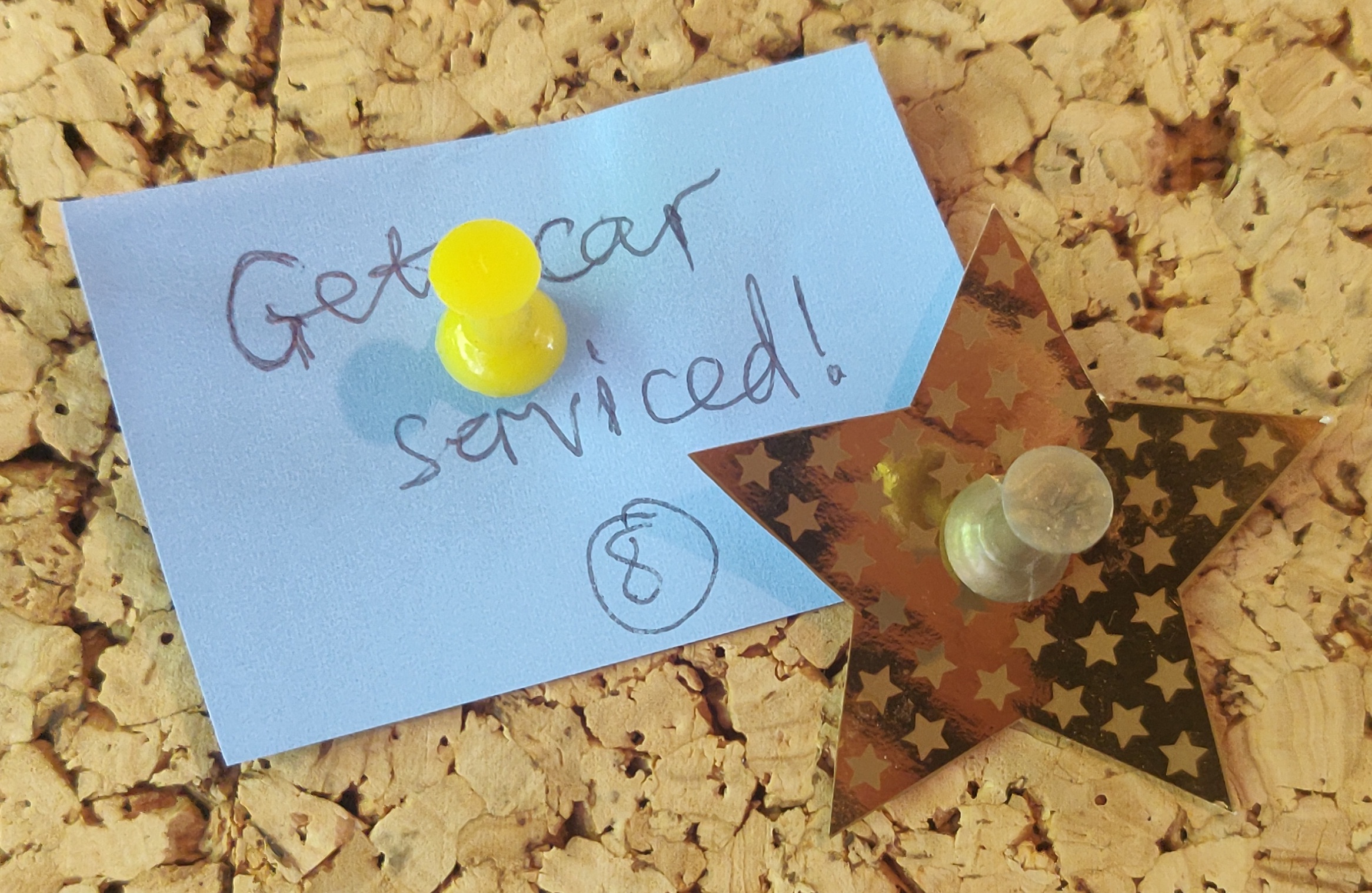How to do Home Scrum
This category covers what it says on the tin: the practicalities of how to do Home Scrum. There is also a sub-category of ideas related to Scrum that, personally, we found less useful.
What Scrum is
Scrum is a way of organising a small group of people to work together. The whole system is defined fully in the Scrum Guide, which is only 12 pages long. It involves using a board with columns represe
Start Home Scrum now using check-lists
How to get the most out of this blog This blog is written with the most possible emphasis on helping you to put the ideas into specific action immediately. In this post, there are check-lists of all t
TL;DR: Summary of the whole Home Scrum blog as bullet-points
Too long; didn’t read? No problem. Please find below a bullet-point list summary of Home Scrum of nearly all the ideas included in this blog. Finding your Home Scrum team Scrum is meant to be us
How to ask for help using Home Scrum (with scripts)
What you are actually asking for It is a good idea, and a sign of respect, to ask for specific help when approaching someone. So, what are you actually asking someone in your Home Scrum team to do? He
Who to choose for your Home Scrum team
How to choose your team You need at least one other person to do Home Scrum. You can have more than one—the official Scrum Guide states that a Scrum team should be small, “typically 10 or fewe
Stuff to get for doing Home Scrum
Gathering your equipment You don’t need much to do Home Scrum, and you likely could improvise solutions from what you already have. But you may want a bit more in the way of equipment, and if so, th
How to find a good space for your Home Scrum board
The very first decision to make when getting your Home Scrum system set up is where you should put your board. It needs to be somewhere where you will see it frequently. If it is tucked away in a
Some Home Scrum board layouts, from simple to overly complex
At the heart of the Scrum framework is the Scrum board. It’s best to use a real, physical board, although it doesn’t matter whether it’s a cork-board or white-board, or even just a demarcated pi
Burn-up charts & story points: the weird world of intrinsic motivation
Capturing a task for your Scrum board is as simple as grabbing a small scrap of paper, jotting the task down, and putting it on the relevant place on your board. This is all that is required by offici
Life categories
I feel that a good planning system would not be complete without some colour-coding. A good level for this is to use different colours of paper for different types of tasks. In corporate Scrum, these
Sprints and Sprint Goals
What is a sprint? As stated in the introductory post, a sprint refers to the time-cycle in Scrum at the end of which you have your Sprint Review, Sprint Retrospective and Sprint Planning for the next
How to do the Home Scrum events
What are the Scrum events? In Scrum, we avoid the term ‘meeting’ because even inside the corporate world, it has too many negative connotations. They used to be called ‘ceremonies’ but now the
Different flavours of Daily Scrum
The main purpose of your Daily Scrum is to meet as a whole team in front of your Scrum board and share your progress and obstacles, ideally towards your Sprint Goal. It is time-boxed to fifteen minute
Ideas for your Home Scrum retrospective
The Sprint Retrospective, as the name suggests, is a chance to retrospectively reflect on the last sprint as a team and consider how it went. As the Scrum guide says, it is for the team to “plan way
How to plan (and how to make planning less overwhelming)
The purpose of planning I used to think that the point of planning out my time was to fit more into my days. By cleverly combining certain errands into one trip, squeezing tasks in the spaces between
What Kanban is and how we’ve used elements of it in Home Scrum
Kanban’s similar-but-different approach Kanban is a similar system to Scrum that is meant to help visualise your workflow and improve it based on empirical feedback from reality. Instead of using st
Extra ideas for gamifying your Home Scrum system
There are many ways of expanding on the basic Scrum framework, and in this post I have put together a bunch of suggestions for extra things Francis and I have used that have helped us to get more out
Digital Home Scrum board options (if you have to)
As I say in this post, I would definitely encourage you to use a physical Scrum board. However, there are situations where a digital Scrum board will be the only feasible option, especially if not all
Definition of Done, Definition of Ready, and Acceptance Criteria
The following ideas are not all an official part of Scrum, but they are often used in conjunction with it as complementary techniques. Francis and I don’t use them in our Home Scrum, as we struggle
